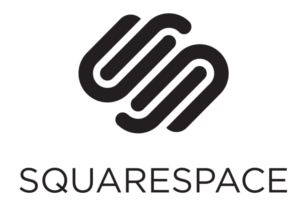In the fast-paced world of online marketing, compelling visuals are the cornerstone of any successful affiliate campaign. They grab attention, convey messages quickly, and drive engagement. In this blog, we’ll explore the strategies and best practices for creating visuals that not only captivate your audience but also boost your affiliate marketing efforts.
Understanding the Importance of Visuals in Affiliate Marketing
Visual content is more likely to be shared and remembered compared to text-based content. In the context of affiliate marketing, where the goal is to promote products or services and drive conversions, visuals play a crucial role in:
Grabbing Attention: In a crowded digital space, eye-catching visuals can make your content stand out.
Conveying Information Quickly: Infographics, videos, and images can communicate complex information swiftly.
Enhancing Credibility: High-quality visuals enhance the perceived value and trustworthiness of the content.
Driving Engagement: Visually appealing content is more likely to be liked, shared, and commented on, increasing its reach.
Key Elements of Compelling Visuals
Creating effective visuals involves more than just picking pretty pictures. Here are the key elements to focus on:
Relevance
Ensure your visuals are directly related to the product or service you’re promoting. Irrelevant visuals can confuse your audience and dilute your message. Use images that highlight the product’s features, benefits, and usage.
Quality
High-resolution images and professional designs are non-negotiable. Poor-quality visuals can harm your credibility. Invest in good design software or hire a professional designer if necessary.
Consistency
Maintain a consistent style and color scheme that aligns with your brand identity. This helps in building brand recognition and trust. Use the same fonts, color palettes, and design elements across all your visuals.
Call to Action (CTA)
A compelling visual should guide your audience towards taking action. Include clear and concise CTAs that encourage clicks, sign-ups, or purchases. Make sure the CTA stands out and is easy to find.
Emotional Appeal
Emotions drive decisions. Use visuals that evoke the right emotions related to your product or service. Whether it’s happiness, trust, or excitement, aligning your visuals with the desired emotional response can increase conversions.
Types of Visual Content for Affiliate Campaigns
There are various types of visual content you can use in your affiliate campaigns. Here are some of the most effective ones:
Infographics
Infographics are a great way to present data and information in a visually appealing and easy-to-understand format. They can explain the benefits of a product, show comparisons, or provide step-by-step guides.
Videos
Videos are highly engaging and can convey a lot of information quickly. Consider creating product demonstrations, tutorials, or testimonial videos. Live videos and webinars can also be effective in engaging your audience in real time.
Banners and Ads
Well-designed banners and ads can drive traffic to your affiliate links. Use eye-catching images, compelling headlines, and strong CTAs. Experiment with different sizes and placements to see what works best .
Social Media Graphics
Social media is a powerful platform for affiliate marketing. Create visually appealing posts, stories, and ads tailored to each platform’s specifications. Use engaging visuals to encourage shares and interactions.
Blog Images
Enhance your blog posts with relevant images, charts, and diagrams. Not only do they break up the text, making it easier to read, but they also add value and context to your content.
Best Practices for Creating Compelling Visuals
Know Your Audience
Understanding your target audience is crucial. What are their preferences, interests, and pain points? Tailor your visuals to resonate with them. Use imagery that reflects their lifestyle and values.
Use High-Quality Tools
Invest in good design tools and software. Adobe Creative Suite, Canva, and Piktochart are popular choices for creating professional visuals. These tools offer templates and resources that can make the design process easier.
Optimize for Different Platforms
Each platform has its own specifications and best practices for visuals. Make sure your images and videos are optimized for the platforms you’re using. This includes size, format, and resolution.
Test and Iterate
Don’t be afraid to experiment with different visuals. A/B testing can help you determine what works best. Pay attention to metrics like click-through rates, conversion rates, and engagement to guide your strategy.
Keep It Simple
Simplicity is key in design. Avoid clutter and focus on a clear, concise message. Use whitespace effectively to make your visuals more appealing and easier to understand.
Leverage User-Generated Content
Encourage your audience to create and share their own content related to the product. User-generated content can be a powerful endorsement and adds authenticity to your campaign .
Conclusion
Creating compelling visuals for your affiliate campaigns is an art and a science. By focusing on relevance, quality, consistency, emotional appeal, and clear CTAs, you can create visuals that not only attract attention but also drive conversions. Use a variety of visual content types, understand your audience, and continually test and optimize your visuals. With these strategies in place, your affiliate campaigns will be more engaging, effective, and successful. Happy designing!
References
“The Power of Infographics in Digital Marketing.” Content Marketing Institute. Link
“Why Video Marketing is So Effective.” Wyzowl. Link
“Best Practices for Creating Effective Display Ads.” Google Ads. Link
“How to Create Engaging Social Media Content.” Hootsuite. Link
“The Role of Images in Blog Posts.” HubSpot. Link
“Understanding Your Audience for Better Marketing.” Neil Patel. Link
“Top Graphic Design Tools for Marketers.” Canva. Link
“Optimizing Visual Content for Social Media.” Sprout Social. Link
“A/B Testing: How to Get It Right.” Optimizely. Link
“The Importance of Simplicity in Design.” Smashing Magazine. Link
“Leveraging User-Generated Content in Marketing.” Marketing Land. Link



